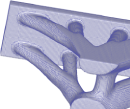In his 1904 paper, Michell analytically derived least weight lattice structures for a series of loading and support configurations. He found that optimal least weight lattices, referred to as Michell solutions, possess the following properties:
- satisfy equilibrium with respect to the imposed boundary conditions
- contain an infinite number of members
- are fully stressed
- contain tension and compression members that meet in orthogonal directions.
More recently, the ground-structure method has become an increasingly popular means to numerically arrive at truss structures that embody many of the same qualities as Michell solutions, but that are defined by a finite number of structural members, making them better suited to designs that can be implemented in practice.
The ground structure method begins with a highly redundant truss, i.e., the ground-structure, and an optimization algorithm is used to eliminate suboptimal members. By limiting the initial ground structure to a finite number of members, the solutions obtained from the ground-structure method do not represent truly optimal Michell solutions, but rather approach Michell solutions in the limit as the number of members in the initial ground-structure approaches infinity.
The following demonstration shows how optimal solutions derived from the ground structure method converge toward the Michell solution as the number of members defining the initial ground structure is increased. All analytical results below are obtained using the educational MATLAB code, GRAND (Zegard and Paulino, 2014), which uses the plastic formulation to minimize the volume (weight) subjected to equilibrium and stress constraints.
The following domain and boundary conditions for Michell's cantilever are considered (Zegard and Paulino, 2014):
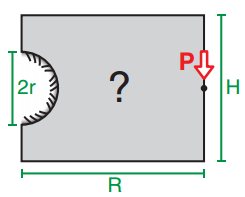
The minimum volume structure for Michell's cantilever can be expressed as (Michell, 1904):
where P =1 is the end load, R = 5 is the horizontal length of the domain from the center of the circular support to the end load, and r = 1 is the radius of the circular support as shown in the figure. The stress limits σT and σC default to 1 in GRAND.
The initial ground structure is defined in GRAND by creating a “mesh” similar to that used in a finite element analysis. Instead of performing a finite element analysis, however, the mesh is simply used to generate the initial ground structure by connecting the nodes by truss members. The number of members in the initial ground structure is affected by two factors:
- mesh refinement: a finer mesh allows for an increased number of members in the initial ground structure.
- nodal connectivity level: a higher nodal connectivity level allows for an increased number of members in the initial ground structure. For example, a level 1 ground structure connects only nodes that are part of the same element; a level 2 ground structure connects nodes of neighboring elements, in addition to those from level 1; a level 3 ground structure connects nodes of the neighbors of the neighbors, in addition to those from level 1 and 2; and so on for level 4 and up.
Click on the tabs below to see how the ground structure nodal connectivity level affects the minimum volume solution obtained using the elastic formulation in GRAND. All of the examples below are based on the same mesh, but different levels of initial ground structure.
- Level 1
- Level 2
- Level 3
- Level 4
- Level 5
- Level 6
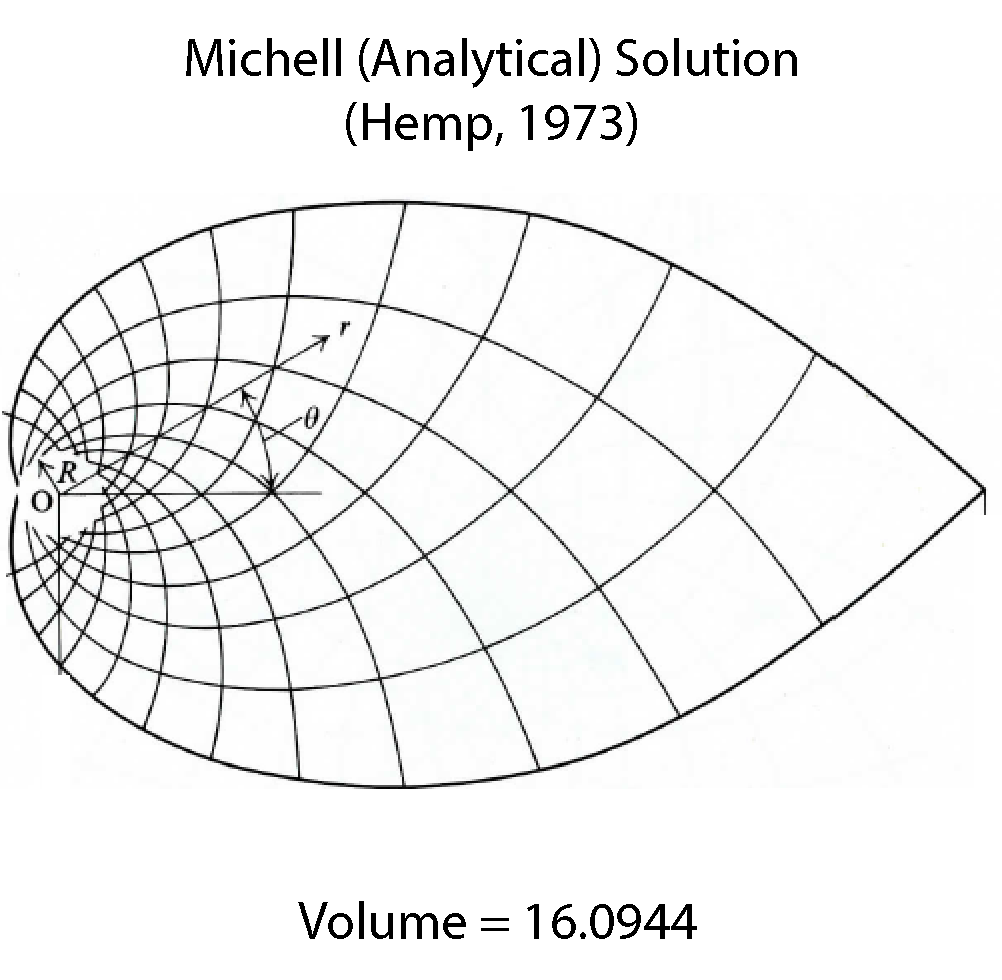
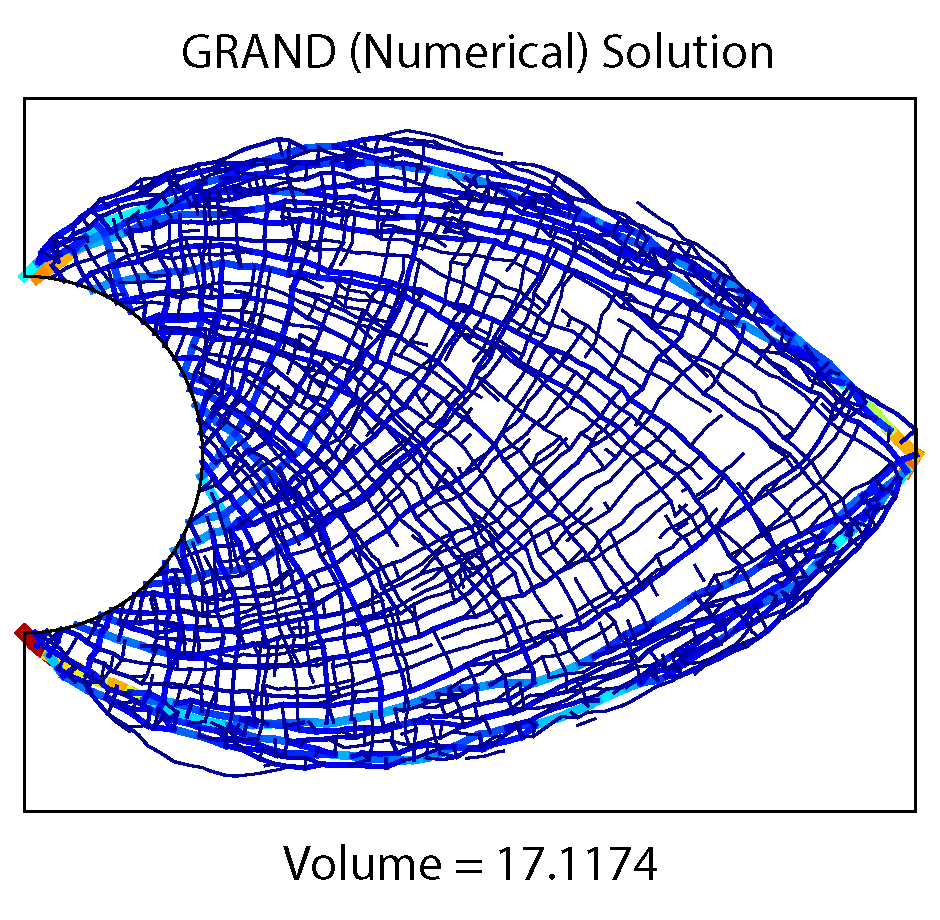
Note: The optimal solution contains some hanging members (i.e., they are not connected
to the structure at one or both ends). This is due to a "cutoff" used in plotting the solution.
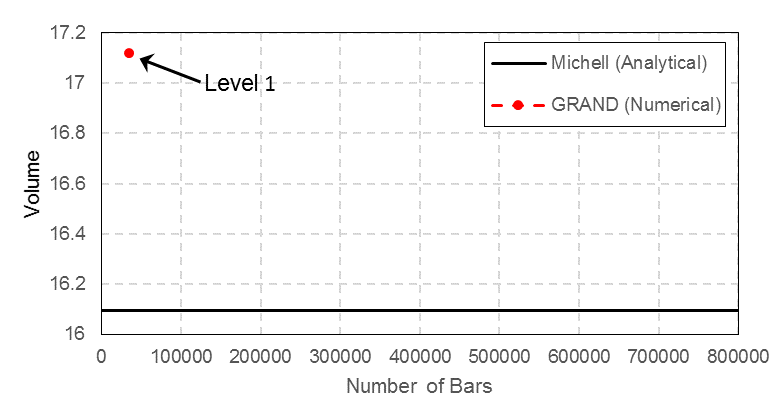

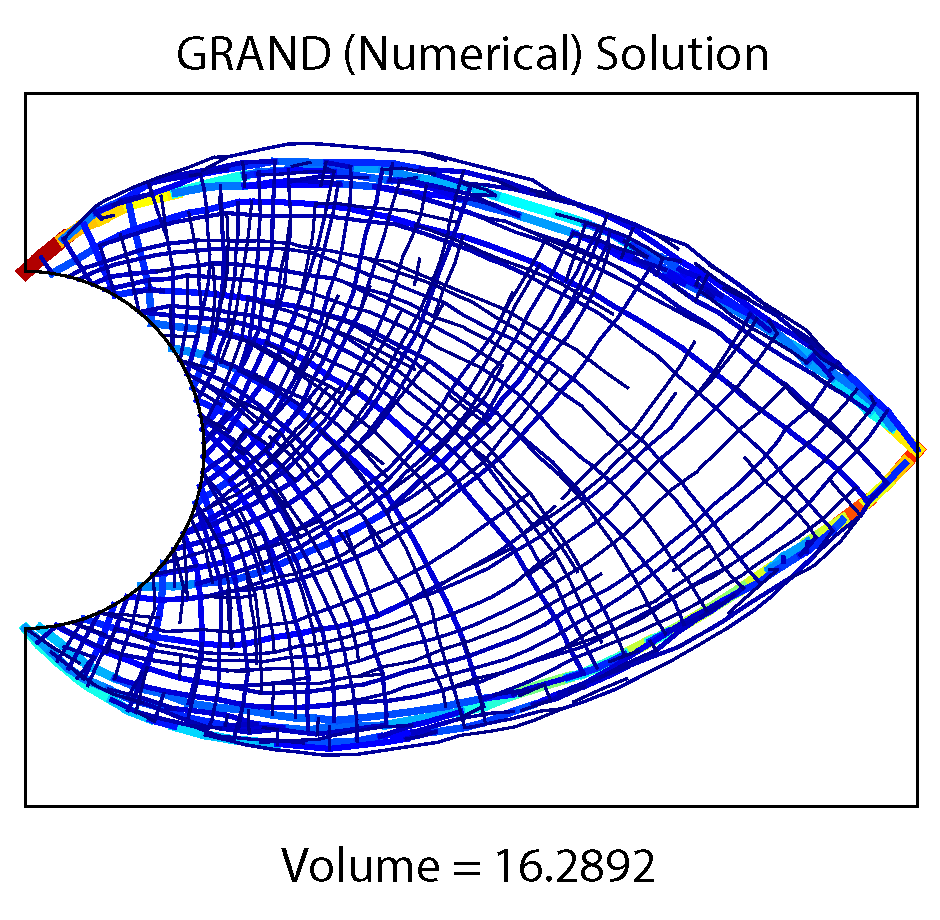
Note: The optimal solution contains some hanging members (i.e., they are not connected
to the structure at one or both ends). This is due to a "cutoff" used in plotting the solution.
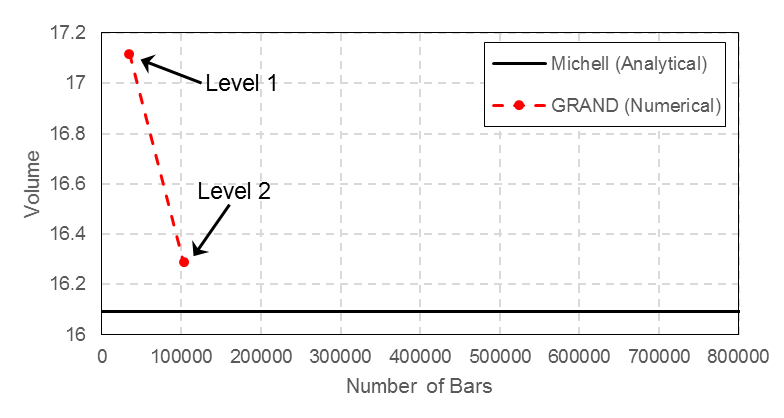

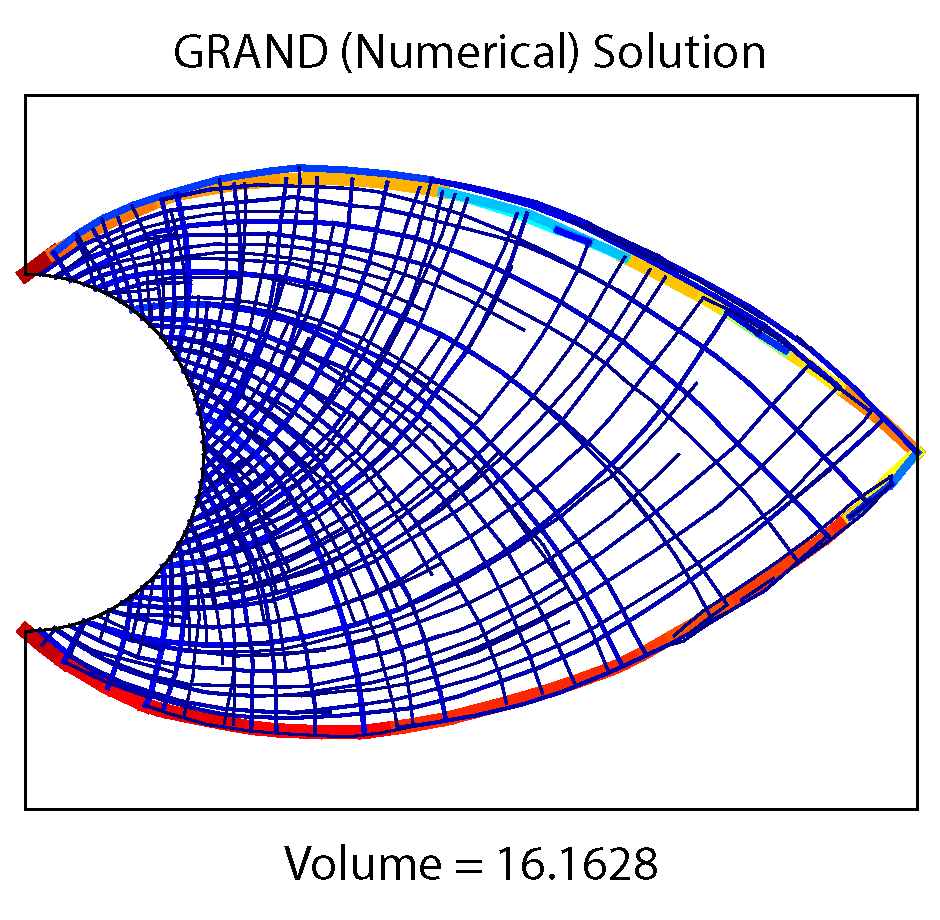
Note: The optimal solution contains some hanging members (i.e., they are not connected
to the structure at one or both ends). This is due to a "cutoff" used in plotting the solution.
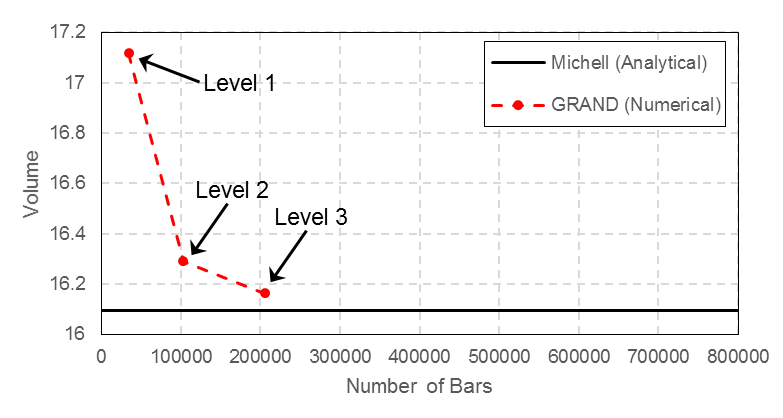

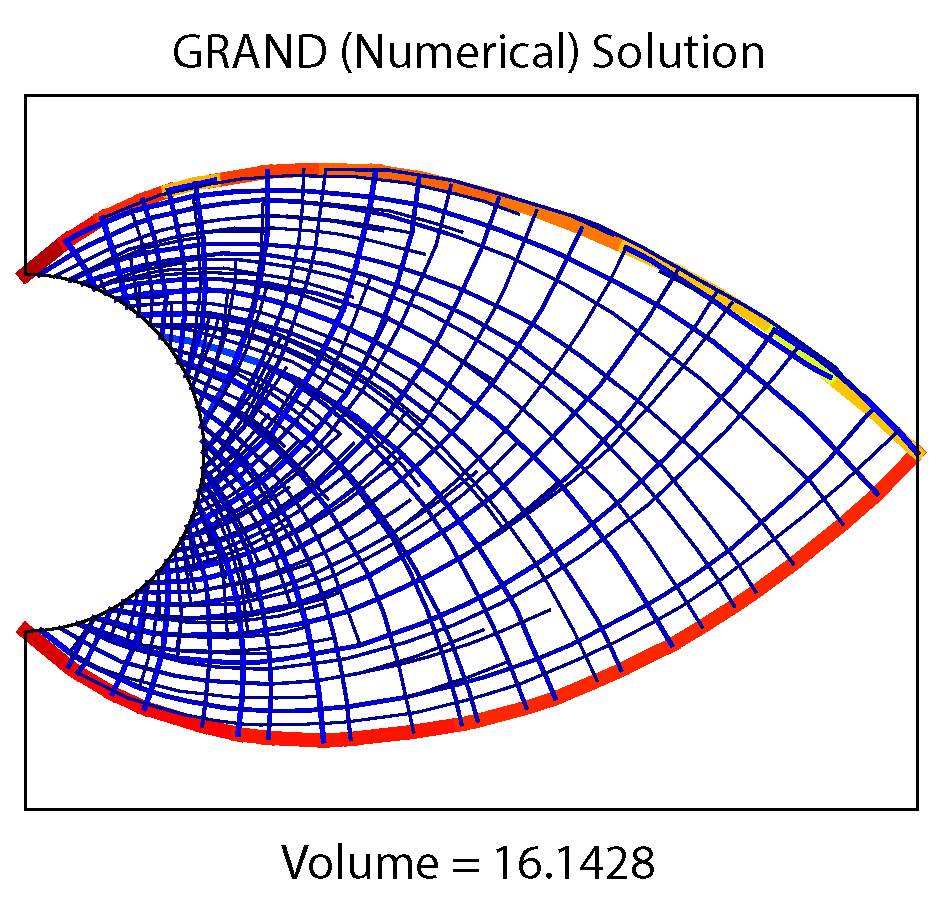
Note: The optimal solution contains some hanging members (i.e., they are not connected
to the structure at one or both ends). This is due to a "cutoff" used in plotting the solution.
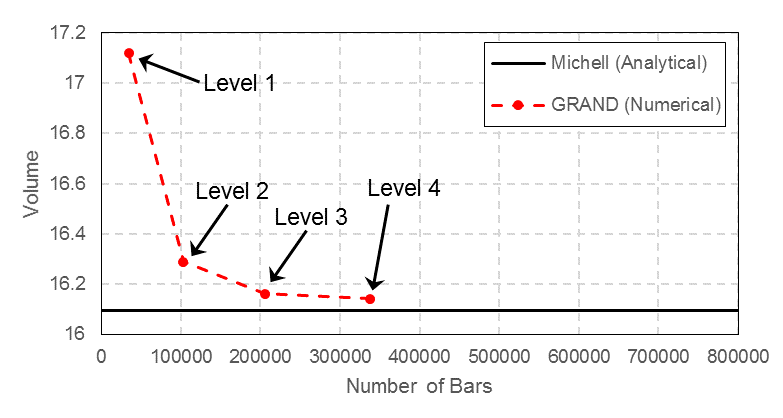

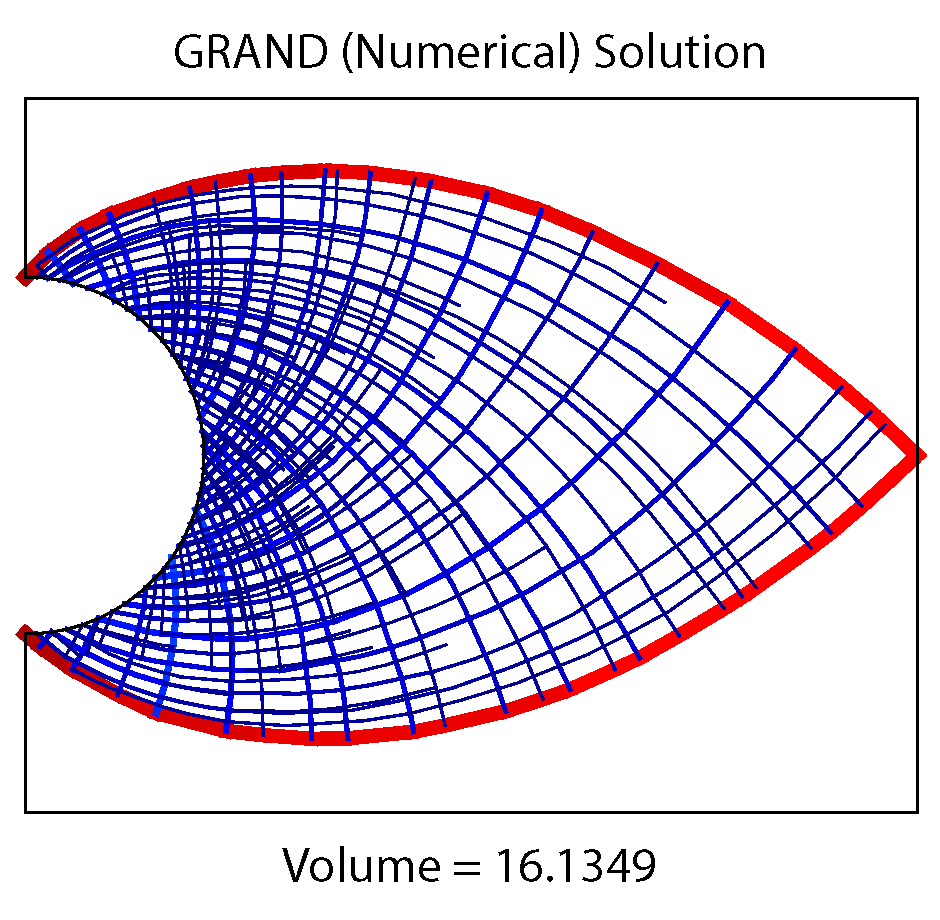
Note: The optimal solution contains some hanging members (i.e., they are not connected
to the structure at one or both ends). This is due to a "cutoff" used in plotting the solution.
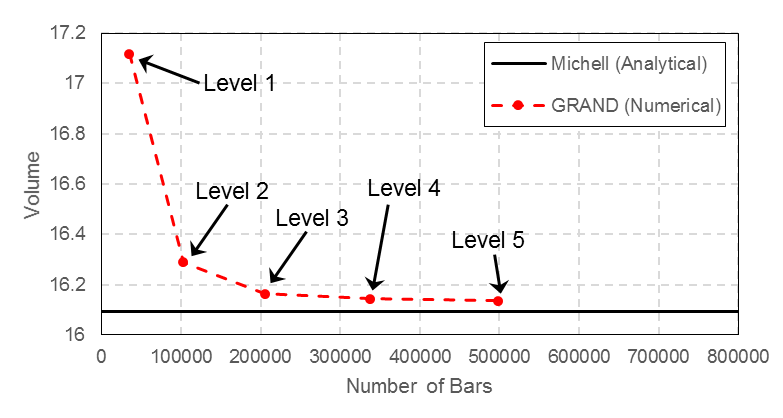

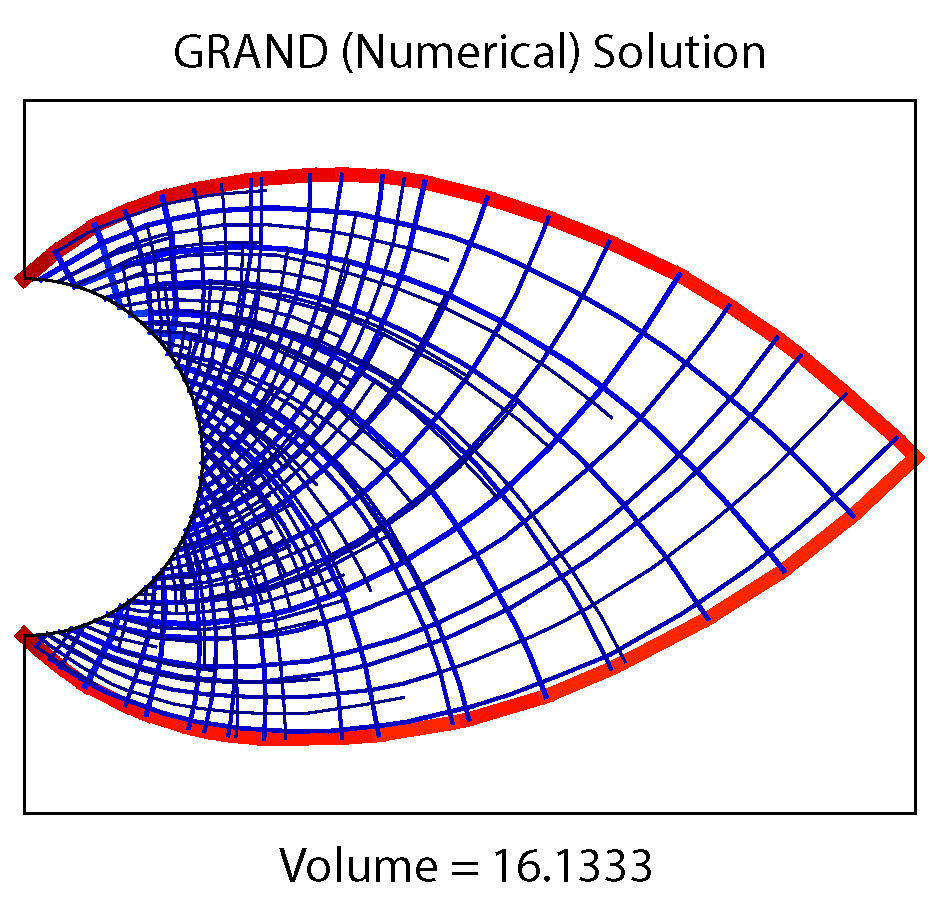
Note: The optimal solution contains some hanging members (i.e., they are not connected
to the structure at one or both ends). This is due to a "cutoff" used in plotting the solution.
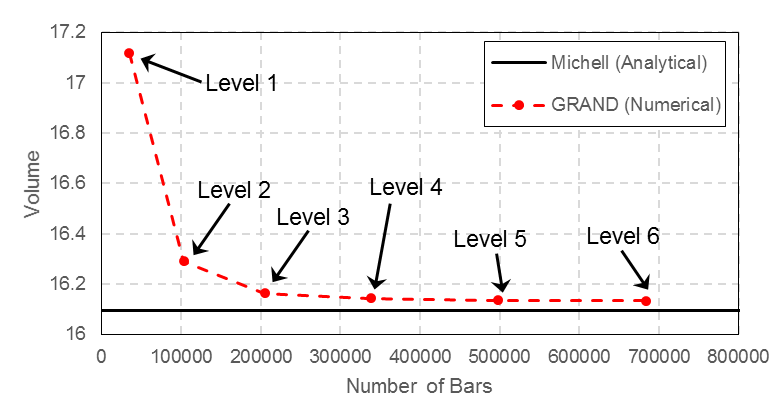
- A.G.M. Michell. "The limits of economy of material in frame structures." Phil Mag Ser 6. 8(47):589-597. 1904.
- W.S. Hemp. "Optimum Structures." Oxford University Press, Oxford. 1973.
- T. Zegard and G.H. Paulino. "GRAND - Ground structure based topology optimization for arbitrary 2D domains using MATLAB." Journal of Structural and Multidisciplinary Optimization. 50(5):861-882. 2014.
Link to PDF | Download GRAND v1.0

